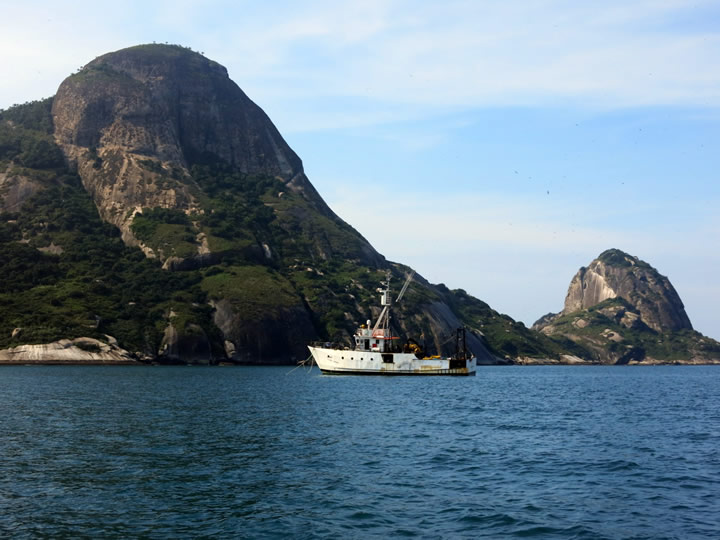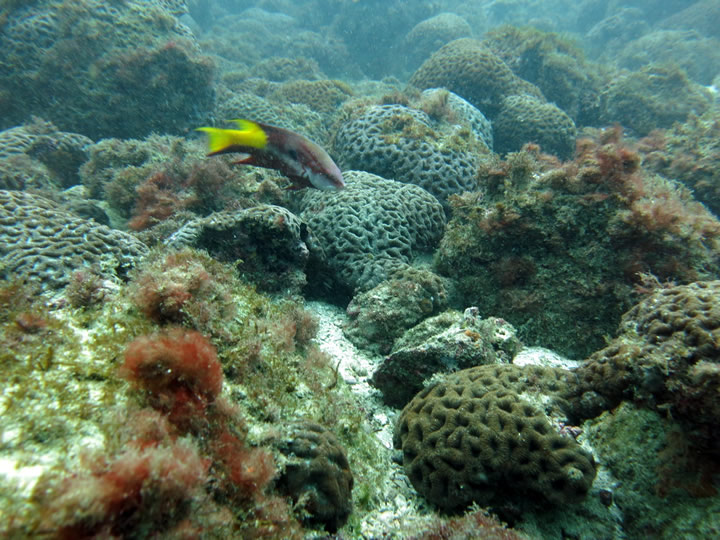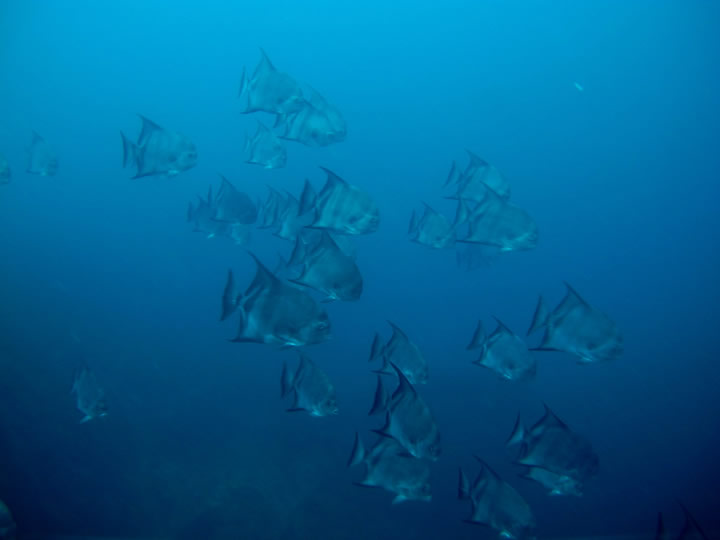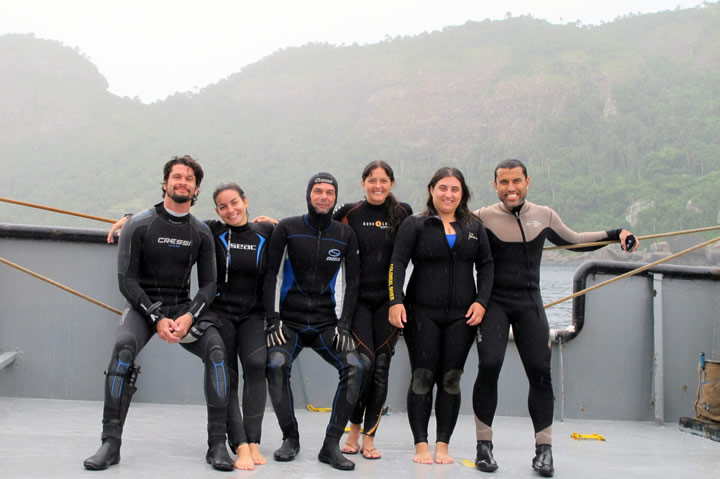Expedition: Archipelago of Alcatrazes
Between 28/02/2016 and 04/03/2016, members of LECAR participated in an expedition to Archipelago of Alcatrazes
(24°6’8”S & 45°41’37”W), São Paulo, Brazil. The expedition was organized by staff of the Estação Ecológica
Tupinambás and had the support of the research vessel Soloncy Moura of Instituto Chico Mendes de Conservação
da Biodiversidade (ICMBio / CEPSUL).
Alcatrazes Archipelago is located 45 km off the coast of São Sebastião - SP, formed by thirteen islands, is a marine
protected area currently managed by ICMBio through of Estação Ecológica Tupinambás. Despite the proximity to the
coast, the archipelago served as long time as training fire target by Brazilian Navy until 2013. Consequently, the area
was kept forbidden for fishing and visiting during the past three decades. The island has the largest quantity of
magnificent frigatebird nests (Fregata magnificens) in the Atlantic, and a huge variety of other birds, plants, reptiles,
amphibians and invertebrates, including some endemic species such as a pit viper (Bothrops alcatraz) and frog
(Scinax alcatraz), both classified as critically endangered.
The LECAR team collaborated on a survey to removal sun coral colonies (Tubastraea spp.) to control the spread of
these exotic species. In addition, researchers conducted an underwater visual census and transects to monitor fish
and sea urchins density. The underwater visual census program has been carried annually in the archipelago by
the SISBIOTA network (http://sisbiota.ufsc.br/) since 2012, when it was revealed that the archipelago supports one of
the highest reef fish biomass of the Southeastern Brazilian coast. These data have been contributing to
management and conservation strategies, such as the expansion of the protected area surrounding the
archipelago and a management plan that is in progress. The fish survey in Alcatrazes is entering its fifth year, and
preliminary results indicated a decline in biomass of some reef fish species, especially top predators, an indication
that pouching is taking place.

Photo 1: View of Alcatrazes island and research vessel Soloncy Moura.

Photo 2: Bodianus pulchellus swimming over colonies of Mussismilia hispida.

Photo 3: School of Chaetodipterus Faber.

Photo 4: LECAR team, Moysés C. Barbosa, Bianca B. Sahm (first and second from left to right) and ICMBio team.
|













